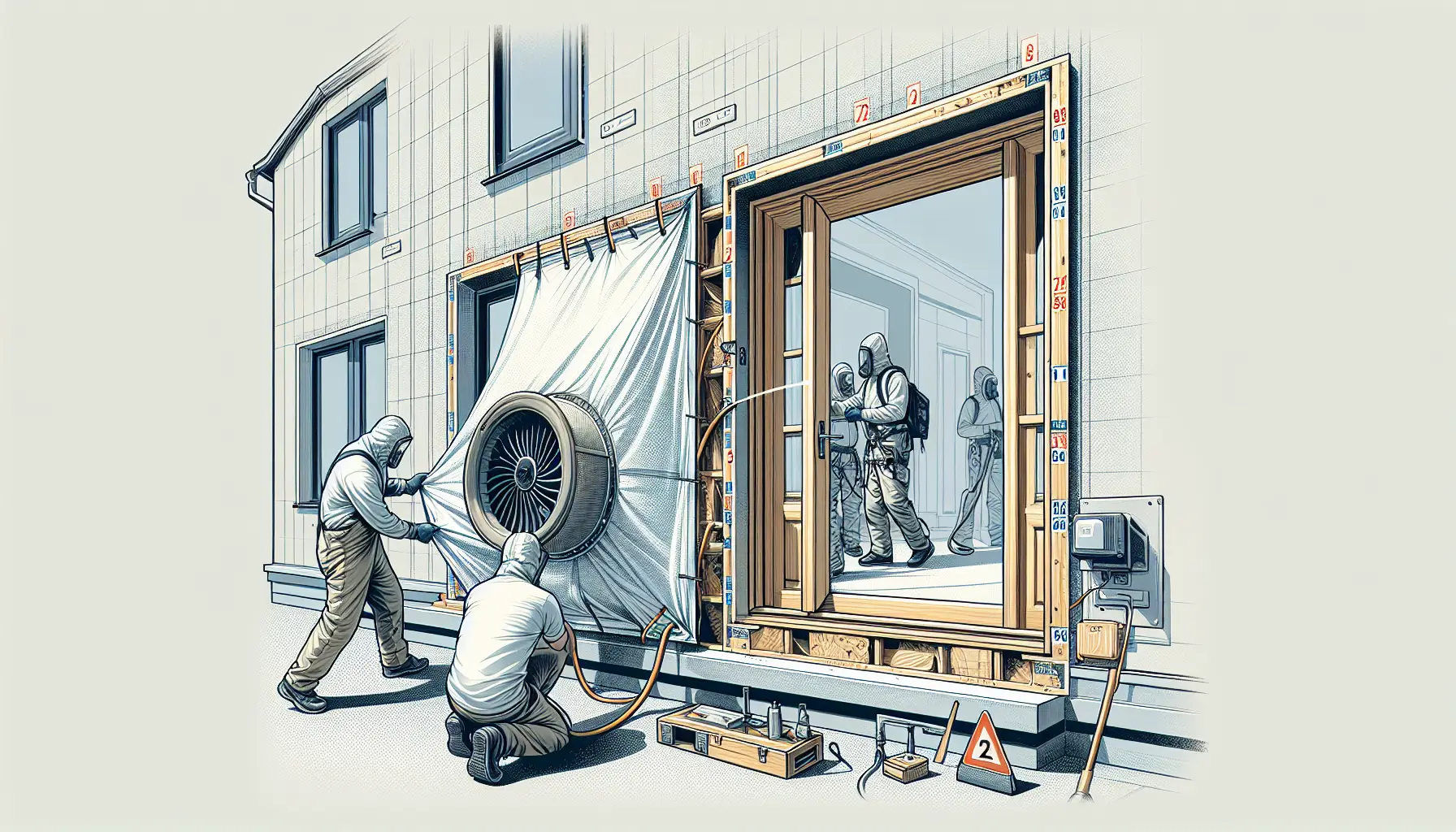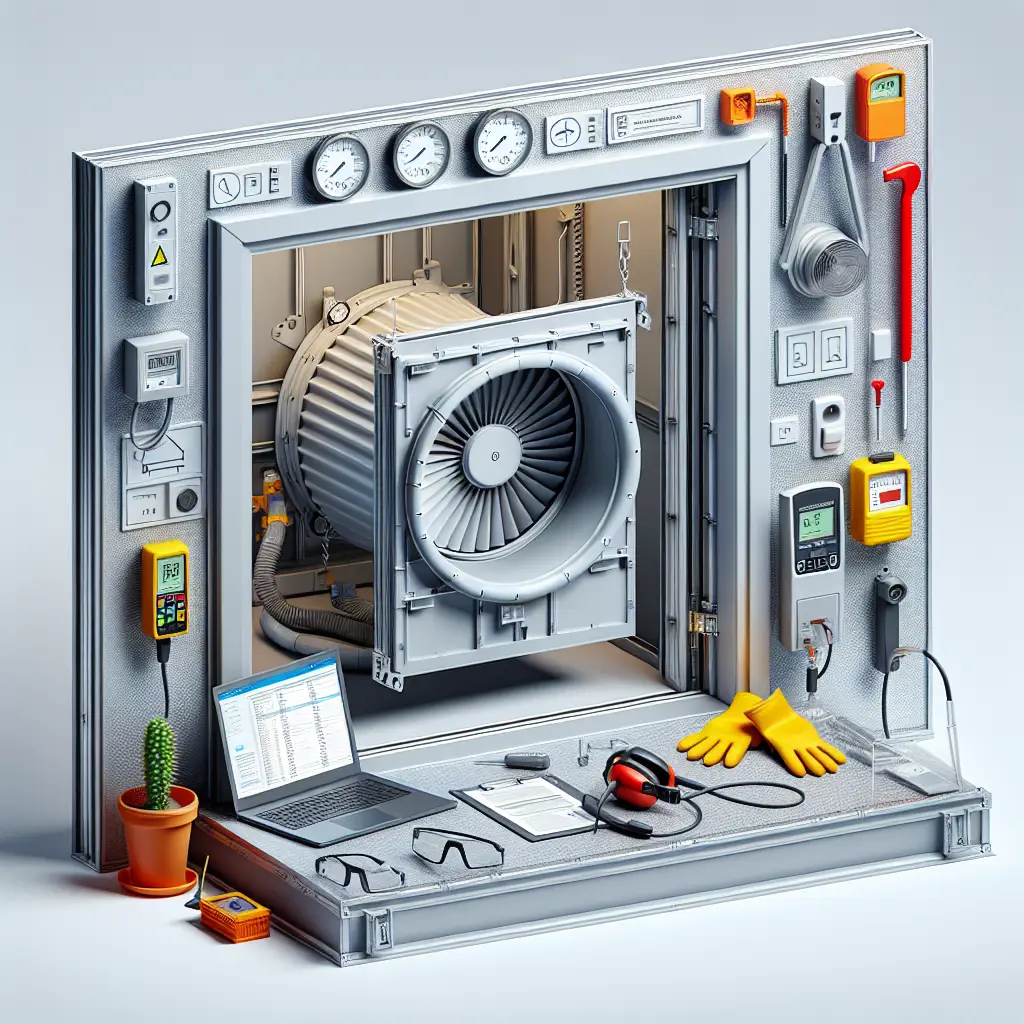Understanding Blower Door Tests: Enhancing Building Performance
In an era where energy conservation and environmental sustainability are pivotal, understanding building performance is crucial. One of the most effective methods to assess this is through a blower door test. Utilised extensively across both new constructions and retrofits, it provides invaluable insights into the airtightness of a structure, impacting energy efficiency and indoor air quality. This controlled diagnostic procedure is indispensable for professionals and homeowners aiming to optimise their building’s performance.
Components and Setup of a Blower Door Test
At the core of a blower door test is a robust, calibrated fan that’s deftly mounted into an exterior door frame using a specially designed panel. Once in place, this fan has the capability to either pressurise or depressurise a building, effectively gauging its airtightness. Coupled with this mechanical setup is a pressure measurement instrument known as a manometer. This device plays a pivotal role in determining the pressure differential between the building’s interior and exterior environments.
- Fan Installation: Mounted carefully into an exterior door, ensuring no gaps remain.
- Pressure Instrumentation: The manometer is essential for measuring pressure changes with accuracy.
- Sealing the Structure: As the test proceeds, all windows, exterior doors, vents, exhaust fans, and fireplaces are sealed, while interior doors are left open to ensure even air distribution throughout the structure.
The Methodical Process of Blower Door Testing
A blower door test begins with a thorough evaluation of the structure. A technician will ensure that the building is safe, turning off any fossil fuel-burning appliances and mechanical exhaust devices to avoid any disruptions during the test.
- Evaluation and Safety Checks: Prior investigations prevent any potential safety hazards.
- Pressure Differentials: By depressurising the building, air is forced through any holes or crevices in the building envelope, highlighting those elusive air leaks.
- Data Collection: Utilising precise gauges, the tester collects data that reflects the building’s air permeability.
Typically, the test starts by creating a significant pressure difference between the internal and external environments of the building. This is generally done by depressurising the internal space, causing outside air to rush into the building through existing leaks.
Objectives and Benefits of Blower Door Testing
The blower door test’s primary objective is to identify and quantify air leaks in a building’s envelope. These insights empower homeowners and professionals to implement necessary corrective measures, significantly enhancing energy efficiency, reducing utility bills, and promoting healthier indoor air quality.
- Energy Efficiency: By sealing leaks, energy consumption is reduced, leading to lower energy bills.
- Enhanced Comfort: The test helps to identify hot and cold spots, ensuring a more comfortable living environment.
- Moisture Control: Detecting leaks can mitigate risks associated with moisture intrusion, thereby reducing mould growth and potential structural damage.
Furthermore, blower door tests help in evaluating whether a building is excessively airtight or allows too much airflow, determining the appropriateness of mechanical ventilation systems. This analysis is critical not just for comfort but for compliance with building performance standards.
Metrics and Results: Understanding the Numbers
Upon completion of a blower door test, results are typically expressed in terms of air changes per hour (ACH) or cubic feet per minute (CFM) at a specified pressure differential, commonly at 50 pascals. These metrics are crucial for understanding the building’s overall airtightness.
- Air Changes Per Hour (ACH): Indicates how many times the air within a building is replaced in one hour.
- Cubic Feet Per Minute (CFM): Measures the volume of air leaking per minute, providing a quantifiable metric for air losses.
The detailed report generated from a blower door test serves as a guide for enhancing energy efficiency and ensuring optimal comfort and safe indoor environments.
Practical Applications of Blower Door Tests
Conducted during the final stages of construction, after renovations, or as part of an energy audit, blower door tests are invaluable for multiple stakeholders including building researchers, weatherisation teams, home performance contractors, and home energy auditors.
- End of Construction Verification: Ensures that the new building meets the required airtightness standards.
- Retrofit Works: Helps identify opportunities to improve existing structures.
- Energy Audits: Provides a comprehensive analysis of the building’s energy usage patterns.

FAQs on Blower Door Tests
1. Why is a blower door test necessary for my home?
A blower door test is crucial as it helps identify air leaks in your home’s structure. It provides valuable information that can help reduce energy waste and consequently lower your utility bills. By improving the airtightness of your home, you also enhance outdoor air entry control, which is vital for maintaining optimal indoor air quality. Additionally, it assists in identifying areas prone to moisture ingress, reducing the risk of mould and structural damage over time.
2. How does a blower door test contribute to energy savings?
By identifying air leaks, a blower door test provides insights that can be used to seal gaps in the building envelope. This sealing process can drastically improve the energy efficiency of a building by reducing the amount of uncontrolled airflow, which in turn, decreases the energy needed for heating or cooling. The ultimate goal is to provide a more consistent indoor climate with less energy consumption, which not only saves money but also helps in conserving environmental resources.
3. When is the best time to conduct a blower door test?
The ideal time to conduct a blower door test is at the end of the building process, during renovation projects, or when conducting an energy audit. Testing during the construction phase allows for adjustments to be made before occupancy, ensuring optimal energy performance right from the start. In contrast, post-occupancy or during retrofit works, a blower door test can inform necessary modifications to improve existing energy inefficiencies and upgrade the overall comfort and performance of the building.
In summary, a blower door test stands as a vital tool in the arsenal of energy efficiency tactics. Offering comprehensive insights and data on a building’s airtightness empowers both professionals and homeowners to take actionable steps towards enhanced building performance. With these measures, not only does the building’s comfort and energy efficiency improve, but its overall durability and air quality are also optimised, making it a more sustainable and cost-effective investment.
For those looking to ensure the highest standards of energy performance in their buildings, Ratio Seven proudly offers expert guidance and blower door testing services suited to your needs.




